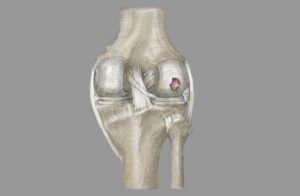Medical billing plays a critical role in healthcare organizations, ensuring timely reimbursement for services rendered. However, inefficient billing processes can lead to delayed payments, increased costs, and decreased overall productivity. In this article, we will explore various strategies and best practices that can help improve medical billing efficiency.
Enhancing Medical Billing Efficiency: Key Strategies and Best Practices
Efficient medical billing is crucial for healthcare practices to optimize revenue, reduce errors, and streamline administrative processes. By implementing key strategies such as optimizing coding and documentation practices, embracing technology solutions, ensuring timely claims submission and follow-up, establishing effective revenue cycle management, enhancing communication and collaboration, providing ongoing training and education for staff, and monitoring key performance indicators (KPIs), healthcare providers can achieve improved billing efficiency and financial success. Let’s delve into each of these areas to understand how they contribute to a more efficient medical billing process.
Implement an Electronic Health Records (EHR) System
Transitioning from paper-based records to an EHR system can significantly enhance billing efficiency. EHRs streamline the billing process by automating documentation, coding, and claims submission. They enable real-time access to patient information, reducing errors and facilitating quicker claim processing.
Enhance Coding Accuracy and Compliance
Accurate coding is crucial for medical billing efficiency. Ensure that coding staff receive regular training to stay updated with the latest coding guidelines, such as the Current Procedural Terminology (CPT) and International Classification of Diseases (ICD) codes. Conduct regular audits to identify coding errors and provide feedback for improvement. Compliance with coding regulations prevents claim denials and reduces the need for resubmissions.
Centralize and Standardize Billing Operations
Streamlining billing operations by centralizing them in a dedicated billing department can lead to improved efficiency. Establish standardized processes and workflows to ensure consistency and eliminate redundant steps. This centralization allows for better coordination among billing staff, reduces errors, and facilitates effective communication with payers.
Implement Automated Eligibility Verification
Checking patient eligibility for insurance coverage manually can be time-consuming and error-prone. Implementing an automated eligibility verification system integrated with your EHR can expedite the process. These systems can validate patient insurance coverage in real-time, identify any coverage limitations, and notify staff of potential issues before services are rendered.
Use Electronic Claims Submission
Switching from paper-based claims submission to electronic claims submission can significantly improve billing efficiency. Electronic claims are processed faster, resulting in reduced turnaround time for reimbursements. Moreover, they are less likely to get lost or delayed in transit, minimizing the chances of claim denials due to missing documentation.
Optimize Revenue Cycle Management (RCM)
Efficient revenue cycle management is crucial for successful medical billing. Implement a robust RCM system that integrates billing, coding, claims submission, payment posting, and denial management. This centralized system enables better tracking of claims throughout the billing cycle, identifies bottlenecks, and allows for timely follow-up on unpaid claims.
Also Read:
- How to Verify Patient Insurance
- Key Metrics to Consider During Practice Analysis
- Optimizing Documentation for accurate medical and coding
By doing this physicians can enhace Medical Billing Efficiency.
Regularly Review Fee Schedules
Staying updated with payer fee schedules is essential to ensure accurate billing and reimbursement. Periodically review and compare your charges with the fee schedules to identify any discrepancies. This proactive approach can help prevent undercharging or overcharging, reducing claim rejections and improving revenue generation.
Embrace Automation and Artificial Intelligence (AI)
Leverage automation and AI technologies to streamline billing processes further. Automated tools can assist with tasks such as claim scrubbing, automated payment posting, and denial management. AI-powered algorithms can analyze billing patterns, identify potential billing errors, and suggest improvements. These technologies not only save time but also enhance accuracy and productivity.
Regularly Monitor Key Performance Indicators (KPIs)
Establishing and tracking key performance indicators (KPIs) is vital for assessing and improving billing efficiency. Measure metrics such as clean claim rate, average days in accounts receivable, and denial rate. Regularly review these KPIs to identify trends, bottlenecks, and areas for improvement. This data-driven approach enables informed decision-making and targeted process enhancements.
Conduct Regular Staff Training and Education
Keep your billing staff updated with the latest industry trends, coding guidelines, and regulatory changes. Provide ongoing training sessions to enhance their knowledge and skills, ensuring accurate and efficient billing practices.
Implement Real-Time Claim Adjudication
Utilize systems that offer real-time claim adjudication, which can instantly verify claim accuracy, identify errors or missing information, and provide immediate feedback. This minimizes the need for claim rework and speeds up the reimbursement process.
Utilize Predictive Analytics
Leverage predictive analytics tools to analyze historical billing data and identify patterns or trends. These insights can help you proactively address potential issues, optimize revenue cycle management, and make informed decisions to enhance billing efficiency.
This practice is also suitable to enhancing medical billing efficiency.
Improve Documentation Practices
Accurate and thorough documentation is crucial for successful billing. Implement guidelines and provide training to healthcare providers on proper documentation practices, ensuring that all necessary information for coding and billing is captured correctly.
Streamline Patient Registration and Insurance Verification
Enhance the efficiency of patient registration processes by implementing electronic registration systems. These systems can capture accurate patient demographic and insurance information, reducing the risk of billing errors and claim denials due to incorrect or outdated data.
Establish Clear Communication Channels
Foster effective communication between billing staff, healthcare providers, and front desk personnel. Encourage open dialogue to promptly address any billing-related concerns, resolve discrepancies, and ensure accurate and timely claim submission.
Outsource or Automate Non-Core Functions
Consider outsourcing certain non-core billing functions, such as data entry or claims follow-up, to specialized billing service providers. Alternatively, explore automation options to streamline repetitive tasks, freeing up staff time for more complex billing activities.
Conclusion
By adopting these strategies and best practices, healthcare practices can enhance their overall operational efficiency, minimize billing errors, and achieve a smoother and more effective billing process. It is crucial for healthcare providers to stay proactive, adapt to industry changes, and leverage technology solutions to continuously improve their medical billing efficiency and financial outcomes.









